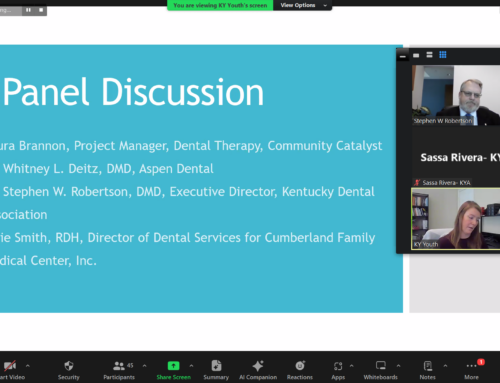 We know that in addition to properly caring for oral health at home, individuals need access to appropriate treatment and care when they have an oral health concern. Providing dental care, and in particular care for non-traumatic dental conditions (NTDCs) – like tooth decay, intraoral abscesses, gingivitis, and periodontitis – is best addressed in a dentist’s office. However, the use of emergency departments (EDs) for NTDCs is on the rise and has become a growing public health concern for policymakers, health advocates, and providers across the United States.
We know that in addition to properly caring for oral health at home, individuals need access to appropriate treatment and care when they have an oral health concern. Providing dental care, and in particular care for non-traumatic dental conditions (NTDCs) – like tooth decay, intraoral abscesses, gingivitis, and periodontitis – is best addressed in a dentist’s office. However, the use of emergency departments (EDs) for NTDCs is on the rise and has become a growing public health concern for policymakers, health advocates, and providers across the United States.
Although emergency departments might be the right choice for some conditions, such as uncontrollable bleeding or swelling in the head or neck, or trauma to the facial bones, EDs typically only provide care to address the symptoms of oral concerns by prescribing antibiotics and pain medication, but do not address the cause of the problems. This results in patients often returning to EDs multiple times for the same problem.
Why do people visit the emergency department for non-traumatic dental conditions?
One reason for the increased visits to the ED for oral health needs is that during the COVID-19 pandemic patients deferred routine dental visits because of office closures, fear, or long wait times and as a result of not receiving timely care, they developed acute symptoms that couldn’t be managed at home and sought dental care in emergency departments.
Who makes the most ED visits?
The majority of ED visits for NTDC are made up of patients who are uninsured or have Medicaid coverage. Medicaid enrollees often use EDs as a primary source of oral health care due to the many barriers to accessing oral health care in traditional settings, including dental offices. These include the maldistribution of dentists and the shortage of dental providers who participate in Medicaid, often due to low Medicaid reimbursement rates.
Why is this a problem?
Inappropriate and continuous use of emergency departments for NTDC visits may contribute to overcrowding, increased care costs, and longer wait times for patients with urgent medical and dental conditions. EDs often do not have dentists on staff or available to help address oral health care needs. Dental offices are much better suited to care for patients with dental needs.
What can we do?
Timely and effective outpatient care could prevent or minimize the need for hospital-based services. Therefore, expanded Medicaid dental benefits policies can help increase access to dental care and decrease ED use for dental conditions. Along with strengthening coverage policies, policymakers must create the enabling conditions for the Medicaid population to have access to care, including adequate Medicaid reimbursement rates, and availability of dentists accepting Medicaid.
Join KOHC as we continue to advocate for changes that ensure all Kentuckians can have their oral health care needs met.





